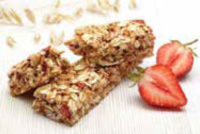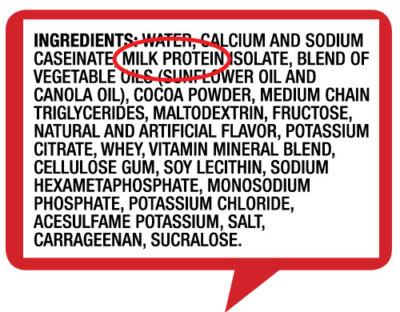Lactose intolerance is an inability to properly digest lactose, a major component of milk. It is a digestive problem and does not involve the immune system (unlike cow’s milk protein allergy, CMPA). Thus, while lactose intolerance can cause stomach discomfort, it will not cause life-threatening reactions.
However, lactose intolerance can start in childhood and slowly become clearer in adulthood. As milk is a key source of calcium, this may negatively affect your child’s growth. Signs and symptoms occurs between 30 minutes to two hours after taking milk or dairy products. The severity of the symptoms usually depends on the amount consumed and how well your child tolerates lactose.
Common signs/symptoms are:
Infants
- Coming on and off the breast during breastfeeding
Infants, toddlers, and older kids
- Wind
- Pain and swelling in the tummy
- Crankiness
- Diarrhoea
- Failure to gain weight
Learn and educate
The first thing to do is to recognise what foods or drinks that your child needs to be wary of. While it is important to expose your children a variety of food, extra care should be taken to reduce/eliminate certain food products, depending on the severity of his intolerance. Explain to him about lactose intolerance and educate him on what he needs to watch out for.
Take the time to read ingredient labels on food products before purchasing them. Avoid foods that contain:
- Milk
- Milk solids
- Non-fat milk solids
- Milk powder
- Lactose
- Casein
- Whey
- Cream
Other foods that may contain milk or other dairy products:


Do notify caregivers including family and friends. Well-meaning friends who are unaware of your child’s lactose intolerance may share foods/drinks that may cause him unnecessary discomfort.
Not enough calcium?
As dairy and dairy products are main sources of calcium for young children, lactose intolerance can be a problem. Your strategy in managing your child’s lactose intolerance will depend on the severity of his intolerance.
If his lactose intolerance is mild then he should still be able to take small amounts of dairy or dairy products, provided that it is both in smaller quantities and spread throughout the day. On the other hand, if his lactose intolerance is so severe that he cannot take any dairy at all, then he will have to get enough calcium from other foods such as lactose-free dairy products and calcium-fortified food products. A good alternative would be to explore milk substitutes such as soy, almond, rice, hemp, or oat milk. Soy milk is a popular alternative as it is a good source of calcium and protein. Almond milk is also a good calcium source but contains less protein than cow’s milk.
If you are thinking of giving him calcium supplements, do consult with his paediatrician beforehand. Taking too much calcium is not advised, as it can cause constipation and there is a possibility of it interfering with the absorption of other nutrients (e.g. such as iron or zinc ).
It takes some getting used to. Some period of adjustment may be needed, but rest assured that you and your child can adapt easily to these lifestyle modifications. Living with lactose intolerance should not represent a major stumbling block – when managed properly, your child can easily adapt and his growth and development should not suffer.








Comments